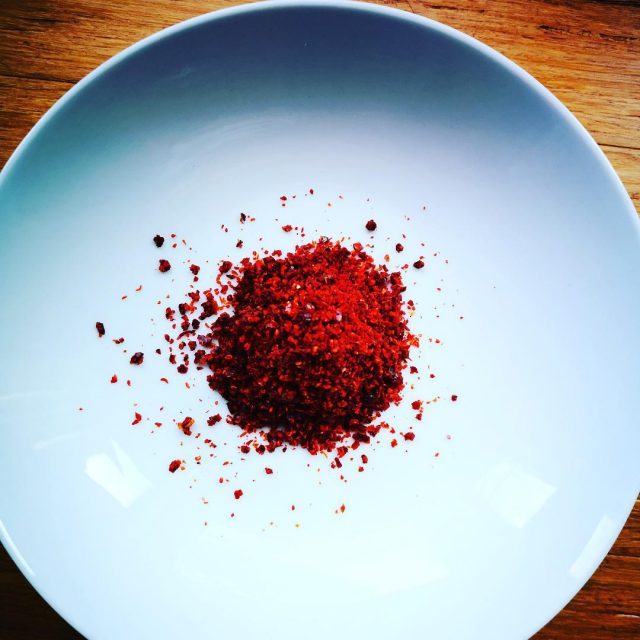A bit about … harissa

Harissa [hah-REE-suh]
I thought we’d take a look at harissa, a spice paste found widely in Middle East cookery. There are several locations where you can find the spice in many grocery stores and specialty shops.
It may appear in brands with the lovely name “Harissa du Cap Bon El Manara de Djerba,” and likely makes a welcome appearance on restaurant menu too.
It’s a delicious and important condiment that has an interesting food history that flies under the radar.

The spice-blend is often made from oil, chiles, garlic, cumin, caraway, coriander and sometimes dried mint. It’s usually served with dried meats, soups and couscous.
Hailing from the Maghreb -— the northwest of Africa along the Mediterranean -— harissa is a special favourite in Tunisia.
The chiles likely came to Maghrebian cuisine by way of Spanish conquistadors to North and Central America — before they occupied Tunisia in the mid-1500s and after having been in the New World. It’s likely harissa got its start in Tunisia and Algeria at about this time.
The spicing is not particularly hot in terms of the Scoville scale and the ingredient may even be added to breakfast dishes in northern Africa. I once had harissa on a crispy duck salad that was repared with arugula, celery, cashews, citrus vinaigrette, fresh ricotta, figs and dried fruit.
Simply delicious and a good addition to your pantry. Give it a try, if you haven’t already.

